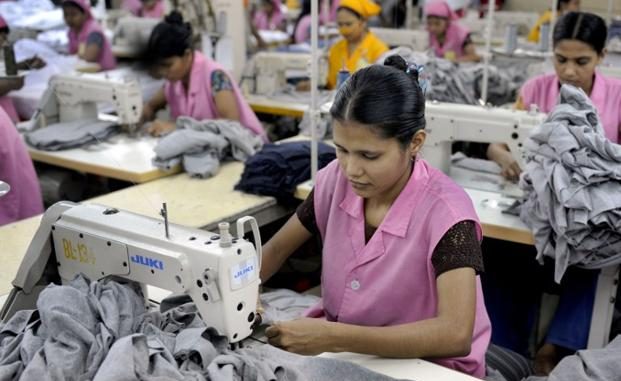
By Ejaz Ghani
New Delhi : A central driver of economic growth is the increased role of women. This growth comes in many forms: better education and health that increase female labour force participation, reduced discrimination and wage differentials that encourage greater effort, and improved advancement practices that promote talented women into leadership and managerial roles.
Despite its recent economic advances, India’s gender balance in labour force participation, entrepreneurship, and growth remains among the lowest in the world. Improving this balance is an important first step for India’s development and its achievement of greater economic growth and gender equality.
In a recent work with Arti Grover, Sari Kerr and William Kerr, we examine how female participation in economic activity has evolved in India (Will market competition trump gender discrimination in India? Policy Research Working Paper Series 7814). Women entrepreneurs in India are mostly concentrated in low-paying industries. This gender concentration in low-wage industries has increased over time. In the manufacturing sector, tobacco products, apparel and textiles attract the largest count and share of women entrepreneurs, perhaps because these industries are known to have lower physical labour requirements. Among services, it is the education, sewage, refuse disposal, sanitation and financial intermediation services that attract the largest share of female proprietors. There is a strong negative relationship between average industry wages and the share of female-led plants in the manufacturing sector. The association between the share of female-owned plants and average industry wages in the services sector is also negative, but not as strongly so.
Industries that show higher rates of female entrepreneurship and employment are also, broadly, the industries that show the highest segmentation in terms of female employees being matched to female owners. If people prefer to work with their own “types”, then in the case of India, gender of the owner overwhelmingly predicts the gender of the employees.
This is also true for male-led plants, where, for instance, radio, television, and communication equipment, other transport equipment and fabricated metal products are among the most gender segmented in informal manufacturing. In the case of services, male-led plants in water transport, land transport and research and development tend to employ the largest share of male workers. Although segmentation by gender is increasing in most industries, it is remarkably heightened in female-led plants in the basic metals and motor vehicles, trailers and semi-trailers segments of informal manufacturing, while within services, it has increased the most in postal and telecommunications and real estate services.
Despite many competitive reforms that India has undertaken, gender-based segmentation has increased over the years. For instance, the share of female employees in female-led informal manufacturing plants increased from 88% in 2001 to 93% in 2010. In the case of services, the share of female employees in women-led establishments increased from 75% to 87% during the same period. Likewise, the share of male employees in male-owned businesses has increased from 80% to 86% in unorganized manufacturing.
Gender segmentation is larger for small plants. Segmentation is larger for an average male employee vis-à-vis an average female employee across all size bands. Said differently, on average, a male employee is more likely to be working with a male co-worker than a female employee is to be working with a female co-worker. This measure of segmentation is also at its peak in smaller plants; however, for female employees it declines with increase in plant size up to mid-sized plants. Segmentation among male employees in manufacturing does not change much across the various size bands. In services, we observe a marginal but smooth decline across size bands in the services sector.
Which states in India have attracted more female entrepreneurs? Andhra Pradesh, Tamil Nadu and West Bengal are amongst the states that have experienced the highest number and shares of female-owned plants in both manufacturing and services. The states with the lowest shares of female-owned plants are Bihar and Assam. Delhi, the nation’s capital, surprisingly has the lowest share of female-owned establishments in manufacturing. Its position in the services sector is only slightly above the national average.
The states that have the highest count and shares of female entrepreneurs are also the states with the highest count of females in the workforce, be it in manufacturing or services. For example, two out of the top four states with the highest count of women employed in manufacturing are Tamil Nadu and Andhra Pradesh. In the case of services, it is again the states from south India that account for large employment count in female participation in economic activity.
Has gender gap converged across different states in India? No. The states with higher income have displayed higher growth in shares of female-led plants. The gap in female-led plants has widened between the leading and lagging states in India.
Has urbanization reduced gender segmentation? It has helped, but the share of female-owned businesses declines with the increase in distance from the Big 7 cities in India. In terms of female employment share, it has declined with distance from the Big 7 cities in the services sector, while we do not observe any definitive spatial location pattern in the case of manufacturing industry.
What can policymakers do? Physical and human infrastructure play a key role in tapping into gender as a new growth driver. Inadequate infrastructure affects women entrepreneurs more than men, because women often bear a larger share of the time and responsibility for household activities. Travel in India can be limited and unpredictable, and women face greater constraints in geographic mobility imposed by safety concerns and social norms. Better transport infrastructure should alleviate a major constraint for female entrepreneurs in accessing markets. India’s future growth escalators are in creating a robust platform for growth, and successfully utilizing its workforce, both male and female.
Ejaz Ghani is a World Bank economist.
Source: Livemint

Leave a Reply